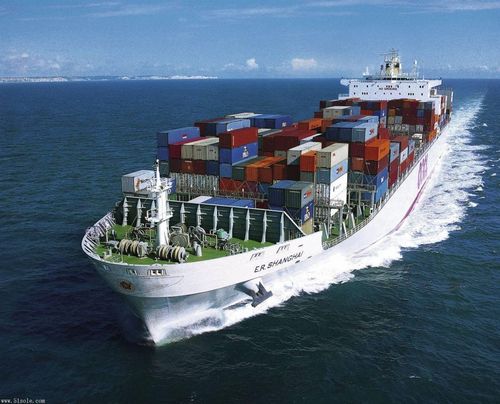- By TOP CHINA FREIGHT
- July 21, 2025
- Shipping
Importing from China to South Africa offers excellent opportunities for entrepreneurs looking to build a retail, e-commerce, or wholesale business. But to be truly successful, it’s not just about buying cheap—it’s about sourcing high-margin products that meet local demand and deliver strong profits.
In this guide, we’ll walk you through how to find, evaluate, and import Chinese products that offer maximum profitability for the South African market.

Why Focus on High-Margin Products?
High-margin products offer:
- Greater profits per sale
- More flexibility with marketing & discounts
- Better resilience to shipping & import costs
- Faster ROI, even with lower sales volume
Step-by-Step: How to Find High-Margin Chinese Products
1. Identify Trends in South Africa
Start by researching what’s hot in your local market. You can use:
- Takealot, Makro, Loot.co.za – Check best-sellers and top-rated items
- Google Trends South Africa – Monitor product popularity over time
- Social Media – TikTok, Instagram, and Facebook can reveal viral and trending items
- Marketplace Platforms – Look at what’s moving fast on Facebook Marketplace or Gumtree
Pro Tip: Focus on products that solve everyday problems or offer a lifestyle upgrade.
2. Use Alibaba & 1688 to Source Products
Once you have product ideas, visit platforms like:
- Alibaba.com: International B2B marketplace
- 1688.com (use with agent or translator): Domestic Chinese pricing, cheaper than Alibaba
- Global Sources & Made-in-China – Alternative supplier platforms
Search your chosen product and filter by:
- Verified supplier
- Trade assurance
- MOQ (minimum order quantity)
- Custom branding (OEM/ODM)
3. Choose the Right Product Type
Here are product categories known for high margins and growing demand in South Africa:
| Category | Product Ideas | Profit Potential |
|---|---|---|
| Beauty & Personal Care | Facial massagers, nail kits, LED beauty tools | ⭐⭐⭐⭐⭐ |
| Smart Gadgets | Wireless chargers, mini projectors, Bluetooth earphones | ⭐⭐⭐⭐ |
| Home & Kitchen | LED lighting, organizers, silicone cookware | ⭐⭐⭐⭐ |
| Fashion Accessories | Sunglasses, watches, phone cases | ⭐⭐⭐⭐ |
| Health & Wellness | Massage guns, fitness bands, posture correctors | ⭐⭐⭐⭐ |
| Auto Accessories | Phone holders, dash cams, car organizers | ⭐⭐⭐⭐ |
4. Validate Profit Margins
Use this simple formula:
Profit Margin = (Selling Price – Total Landed Cost) ÷ Selling Price × 100
5. Order Samples and Test Quality
Never place a large order without checking the product first.
- Order samples from 2–3 different suppliers
- Inspect build quality, packaging, and functionality
- Test with a small target audience if possible
6. Partner with a Freight Forwarder
Using a freight forwarder is critical when importing from China to South Africa. They help with:
- Customs clearance
- Product classification & HS codes
- Shipping options (air, sea, DDP)
- End-to-end logistics tracking
A good forwarder can save you time, money, and compliance headaches.
Best Shipping Methods to South Africa
| Method | Transit Time | Best For | Cost Level |
|---|---|---|---|
| Sea Freight | 25–40 days | Large & heavy items | Cheapest |
| Air Freight | 5–10 days | Medium-size, light cargo | Medium |
| Express Courier | 3–7 days | Small, urgent items | Highest |
Final Thoughts
Finding high-margin products from China to sell in South Africa doesn’t have to be risky. The key is to research local demand, vet suppliers carefully, calculate true costs, and work with a reliable logistics partner.
If done right, importing from China can be your gateway to building a scalable, profitable business in one of Africa’s fastest-growing consumer markets.
Need a Shipping Quote?
Click below to get a free, no-obligation quote from TJ China Freight.
We’ll respond within 24 hours with the best shipping options for your cargo.
FAQ:
Q1: What’s the easiest high-margin product to import?
Phone accessories, beauty tools, and jewelry are easy to ship, low cost, and have high resale potential.
Q2: What are the most profitable Chinese products in South Africa?
Personal electronics, home gadgets, fitness accessories, beauty tools, and car accessories are top sellers with strong markups.
Q3: What is the best way to source products from China?
The best method depends on your experience and volume, but generally:
- Use Alibaba or Global Sources for international wholesale orders
- Hire a local sourcing agent in China for access to 1688 and factory pricing
- Visit trade shows like the Canton Fair for in-person deals
- Verify samples before bulk orders
- Use a freight forwarder to handle logistics and compliance
Q4:What’s the cheapest way to ship to South Africa?
Sea freight is cheapest for large shipments. Consider LCL (Less-than-Container Load) or full container shipping with DDP services to simplify customs and delivery.
Q5:Do I need a business license to import to South Africa?
Yes, if you’re importing commercially. You need to register your business and obtain an importer’s code from SARS.
